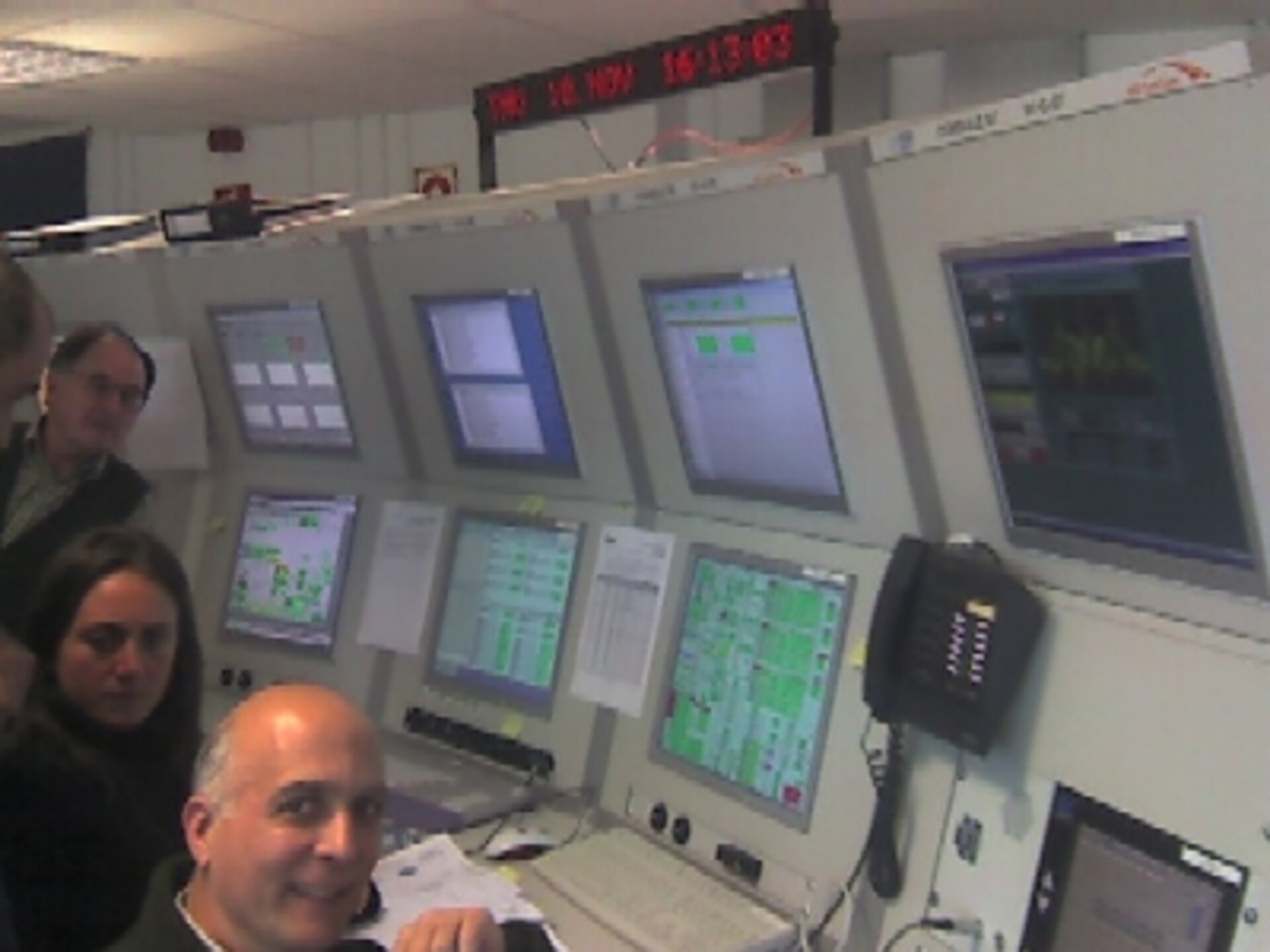Signal receipt marks Cebreros operational fitness
At 17:06 CET on 10 November, ESA's ground tracking station at Cebreros, Spain, picked up the first X-band signal from Venus Express. The milestone marks the first operational activity at the new 35-metre deep space station, part of the ESOC-controlled ESTRACK network.
The newly opened ground tracking station at Cebreros, Avila, Spain, is ESA's second deep space station (DSA2), after New Norcia (DSA1) in Australia. In addition to X-Band, both feature Ka-band frequency capability, allowing them to receive increased amounts of science data and telemetry from current and future ESA missions probing deeper and further into the Solar System.
The new Cebreros station transmits and receives in X-band at 7.1-7.2 and 8.4-8.5 Gigahertz (GHz), respectively, and receives Ka-band signals at 31.8-32.3 GHz; an upgrade to transmit in Ka-band is planned in the future. With X-band operation confirmed, the newest member of the ESTRACK family proved it can meet operational obligations as the primary ground station assigned to support Venus Express.
The transmission came 10 November during the spacecraft's fourth pass over the ground station. A 'pass' corresponds to one visible window period during which the spacecraft is in 'view' of the ground station and signals can be transmitted and received.
During Pass 4, the radio frequency band was also switched from S-Band to X-Band and the downlink telemetry rate was set to 91.4 kilobits/second (kbps).
First telecommands sent in new frequency band
At 17:06 CET, the station acquired the first raw carrier signal, followed at 17:12 by acquisition of telemetry — a carrier signal carrying actual data. At 17:21, the Cebreros station sent the first telecommand to the spacecraft, and, at 17:22, radiometric data measurements, which enable the spacecraft's position and speed to be measured, began. "The station ran perfect; the team was well prepared," said Lionel Hernandez, station manager. Lionel was on-site at the Cebreros station during the LEOP (Launch and Early Orbit Phase) immediately after the 9 November launch of Venus Express. He was joined by the full Maintenance and Operations Team from Spanish contractor INSA, as well as personnel from ESOC in Darmstadt, Canadian prime contractor SED Systems and support staff from the Villafranca ground station.
"Two hours before AOS (acquisition of signal), we started preparation and, right on time, the antenna rotated to lock onto Venus Express. We first saw the locking signal come in as a raw carrier wave, shown on the spectrum analyser in the station control room. Later, we picked up the modulated signal, meaning we had telemetry data," said Lionel.
Venus Express enters Near Earth Commissioning Phase
During the current Near Earth Commissioning Phase for Venus Express, most communications will consist of telemetry, telecommands and radiometric data measurement to help determine the spacecraft's orbit.
The station was manned until 11 November, the final day of LEOP, after which it reverted to normal remote-controlled operation. During critical phases of the Venus Express mission, the station will be staffed to enable immediate action should any problems occur.
"We have been very busy preparing for this. We started two months before the Venus Express launch with intensive training, including mission readiness tests twice per week as well as running tracking campaigns targeting Rosetta and Mars Express," says Lionel. "Everything went really well."
ESTRACK network expands capabilities
Cebreros joins eight other ground stations in ESA's ESTRACK ground tracking station network.
Stations are located in New Norcia and Perth, Australia; Maspalomas and Villafranca, Spain; Kourou, French Guiana; Kiruna, Sweden; and Redu, Belgium. The ESTRACK stations are normally unmanned and are remote controlled from the Ground Facility Control Centre at ESA's Space Operations Centre (ESOC), in Darmstadt, Germany.
Construction on the Cebreros station started in early 2004 and the station was formally inaugurated in September 2005. The antenna dish is 35 metres in diameter and the entire structure is 40 metres high and weighs about 630 tonnes. Together with New Norcia, the station will provide communications with current and future deep space missions including Mars Express, Rosetta, Herschel, Planck, LISA, Gaia and BepiColombo.


